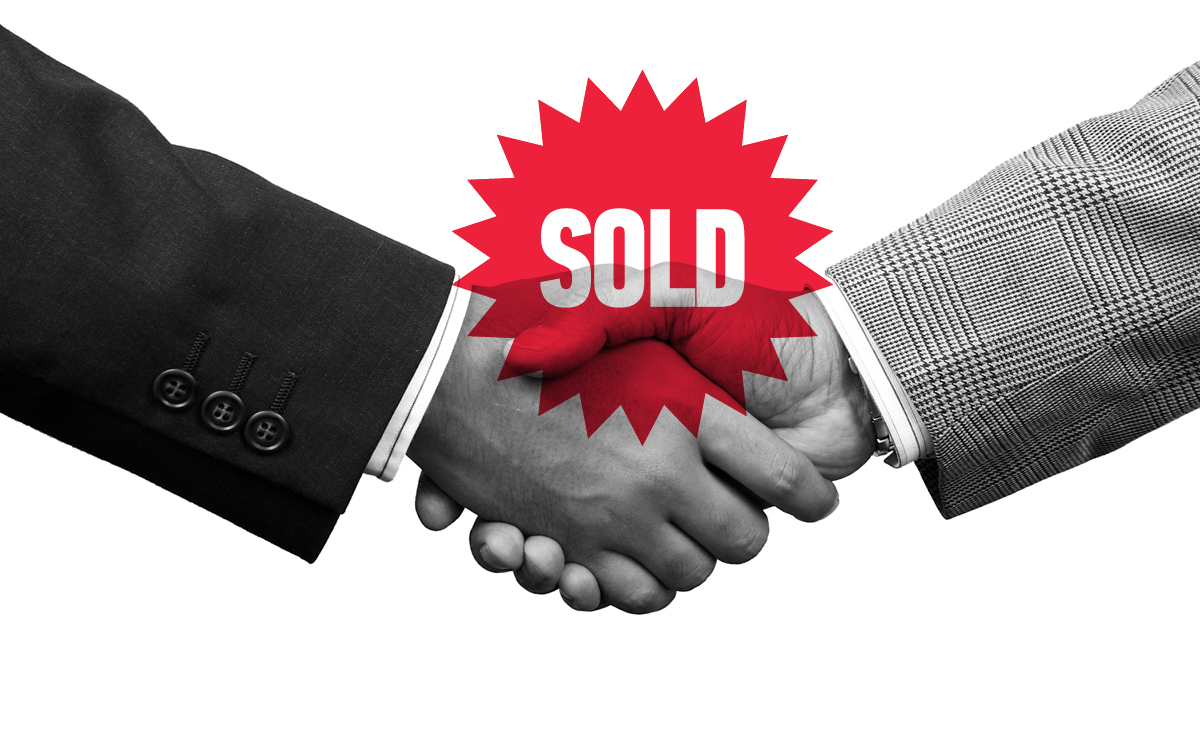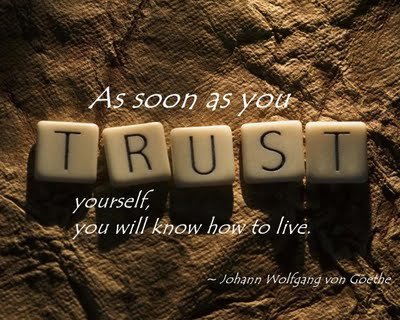
On February 27, 2017, I will celebrate the 10th-year anniversary of the launch of my second business, Inspired Leaders’ Academy. This is a series of posts that tell the story of these ten years to help any service-based solopreneur navigate these same waters easier and faster.
As reported in my first chapter, I changed the direction of my business/career in 2007 from coaching to training and developed a proprietary formula for a signature program, Secrets of Impact & Influence—a public speaking training based on the science of learning and the brain. But how was I going to build awareness for this new training and sell it?
As I also mentioned, I had learned from Harv Eker–one of (if not the) most successful seminar creators and marketers in the world–and I decided to do what he did: offer a teaser event for free. His teaser was 3 days; mine would be 2 hours.
Its purpose? To be so valuable that attendees would want to experience my full public speaking training. In other words, it had to sell.
A year before, this would have been anathema to me: the idea of selling had, for the entire duration of my coaching practice, provoked extreme resistance in me. I would speak in public, but I would not sell; clearly, this had presented problems for me, but nothing anyone said, nor any book, could convince me to become a pushy sales person.
 But in a stunning 45-minute exercise at the certification course I mentioned in chapter one, using the sequence Harv himself had taught us for “selling from stage,” my fears ended. I followed his script and in 45-minutes scratched onto a legal pad an educational presentation—that ended with a sales offer. It was, I felt, some of the best material I’d fashioned to date—and every qualm I’d ever had about selling vanished! Just like that. Seriously.
But in a stunning 45-minute exercise at the certification course I mentioned in chapter one, using the sequence Harv himself had taught us for “selling from stage,” my fears ended. I followed his script and in 45-minutes scratched onto a legal pad an educational presentation—that ended with a sales offer. It was, I felt, some of the best material I’d fashioned to date—and every qualm I’d ever had about selling vanished! Just like that. Seriously.
What made the difference?
Two things: the fact that I was teaching for most of the presentation (I’m a teacher at heart), and then articulating/emphasizing a genuine problem the audience has and offering my solution (I am a helper at heart.)
This was not pushing, not bothering, not looking desperate; I did not feel sleazy or insecure or shy. I was doing what I love best and do best: educating and solving a problem.
Needless to say, I used Harv’s selling-from-stage sequence when I sat down to create my free 2-hour event. The first 20 minutes was an introduction; I then taught for just over an hour, then the final 20 minutes were devoted to emphasizing the problem they faced (for them, it was using extremely outdated speaking techniques) and telling them about my (at the time) 1-day training.
 What I taught for over an hour was “meaty,” unique, educational and also inspiring. It proved my argument that all speakers were unwittingly perpetuating old-school techniques and alienating audiences. I clearly presented the “old paradigm” they existed in and then, as the truth of that reality was sinking in and making them uncomfortable, I presented the picture of the “new paradigm” speaker. These were broad strokes (the details were offered in the full training), but the strokes were evocative: everyone wanted to be in the new paradigm—especially as I was demonstrating it before their eyes.
What I taught for over an hour was “meaty,” unique, educational and also inspiring. It proved my argument that all speakers were unwittingly perpetuating old-school techniques and alienating audiences. I clearly presented the “old paradigm” they existed in and then, as the truth of that reality was sinking in and making them uncomfortable, I presented the picture of the “new paradigm” speaker. These were broad strokes (the details were offered in the full training), but the strokes were evocative: everyone wanted to be in the new paradigm—especially as I was demonstrating it before their eyes.
So, when it came to the so-called “selling” phase, there wasn’t much I had to do—they didn’t want to be ineffective, or outdated; they wanted the competitive advantage a new-paradigm speaking methodology would give them. I just had to tell them how, where and when to get it.
Of course, there is a sequence to unfurl in that phase of things, including reiterating the problem they face, painting a clear picture of what would change for them as a new-paradigm speaker, and, at the very end, creative pricing.
This is one of the keys to an effective sale:
Framing the price in an attractive way. Marketing guru Dan Kennedy has said, “You want them to feel that the investment is inconsequential.” And you do that in many ways, one of which is by offering a comparison price, another is to ask them to consider the cost of continuing old patterns.
This is where some of my clients can get uneasy. It can feel like manipulation to those who are still unsure of the value of their offering. But when you know you have something that will legitimately and dramatically change their life or business; is truly unique, highly valuable and not available anywhere else in as good a package—it is incumbent upon you to invite them to move out of the very habits and strategies that weaken them.
Most of my clients are coaches; they are hired to inspire clients to do what they won’t do on their own, to end destructive or life-depleting patterns. They would not be doing their jobs if they did not make this their priority.
I believe very, very strongly that the same is true of anyone who has a solution. If that solution will  catapult someone into a considerably better situation, you are not doing your job if you don’t inspire them to do what they wouldn’t do on their own: i.e. what you are offering. And to do this, you must incentivize them. You’re not offering time limitations or presenting comparison pricing to manipulate so you get money in your pocket; you’re using creative pricing and other incentives to make the investment inconsequential so they do what is best for them. Humans do not usually do what it is best for them. You must help them do it!
catapult someone into a considerably better situation, you are not doing your job if you don’t inspire them to do what they wouldn’t do on their own: i.e. what you are offering. And to do this, you must incentivize them. You’re not offering time limitations or presenting comparison pricing to manipulate so you get money in your pocket; you’re using creative pricing and other incentives to make the investment inconsequential so they do what is best for them. Humans do not usually do what it is best for them. You must help them do it!
Not all marketers and brands in the world come from this position, Lord knows! Selling has many dark ambassadors. But you are not one of them. You are educating, and then solving a problem that truly harms or depresses your prospect’s full potential. If you’re great at what you do, they will thank you for helping them do what they would not normally have done. Trust me. For ten years, this has been the case for me.
In conclusion: speaking is by far the best marketing strategy for any business. Chet Holmes, a brilliant mind, heart and sales person who passed away a few years ago, brought ‘education-based marketing seminars’ into Fortune 500 companies with huge, huge success. If it works for giant brands, it will work for you.
People love to learn. You love to teach. And you love to help. When you have a sequence to follow, you can love to sell, too!
If you are considering offering (or even just about to offer) an upcoming webinar, live event or local talk, I’d love to help you. You may know how to teach, but I can help you shape the talk or event into something that sells, too. Just click here to speak to me about it privately today.
Stay tuned for chapter 3, when I reveal how I marketed the 2-hour event and what made the live event most successful.
Lessons:
- If you sell services, it is imperative that you give prospects a taste of what you do. You can do this in 1-1 free consulting calls, but it is far, far more lucrative to get many folks in a room and educate them. I call this a “portal” event. Speaking is the most effective marketing strategy for businesses!
- You never need to hate selling again!! If I overcame the disdain, you can (and must), too. In fact, you can love it. And you will as long as you are teaching and solving a legitimate, painful problem. Most likely, you are wired to alleviate pain. If you have something that really does that, it’s incumbent upon you to share it!
- Your educational event must have single thesis and prove your argument. Consider the “old paradigm” your audience is stuck in and the “new paradigm” you move them to.
- Creative pricing is part of what makes selling effective. You want them to feel that the investment is “inconsequential” and this is often achieved by comparing the investment to other options: a higher price, staying in outdated patterns, etc.
- If your solution will catapult someone into a considerably better situation, you are not doing your job if you don’t inspire them to do what they wouldn’t do on their own.




 That weekend, I enrolled in Eker’s Train the Trainer program—and once there, lost my heart to how they worked with audiences, through something called “
That weekend, I enrolled in Eker’s Train the Trainer program—and once there, lost my heart to how they worked with audiences, through something called “ well over a year studying everything I could get my hands on about learning, memory and emotion in the brain.
well over a year studying everything I could get my hands on about learning, memory and emotion in the brain.
 I had a guy friend years ago who frequently exclaimed that “all women are xyz.” Every time he filled in the blank with some negative perception, I pointed out to him that he was painting half of society with the same brush stroke.
I had a guy friend years ago who frequently exclaimed that “all women are xyz.” Every time he filled in the blank with some negative perception, I pointed out to him that he was painting half of society with the same brush stroke.




